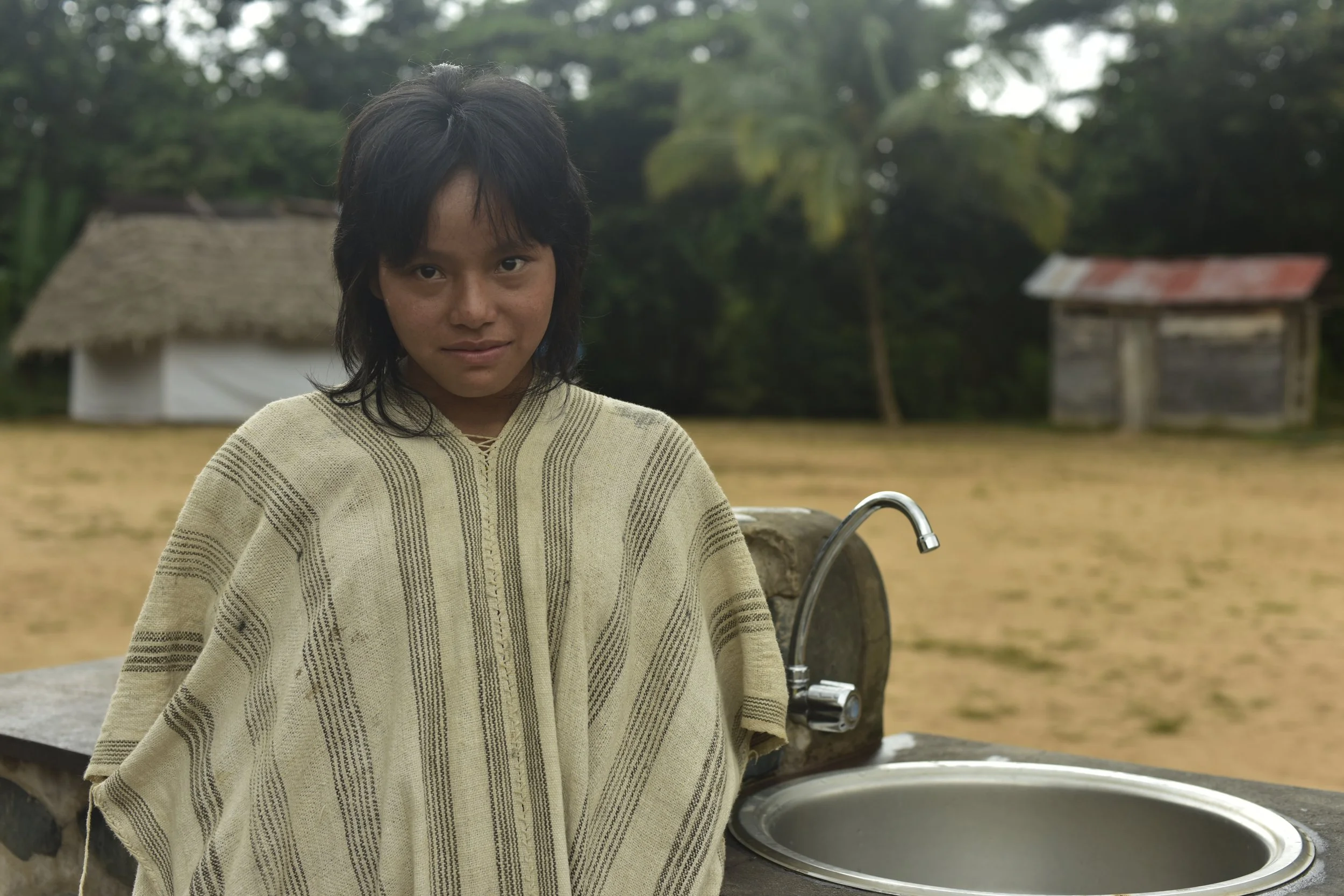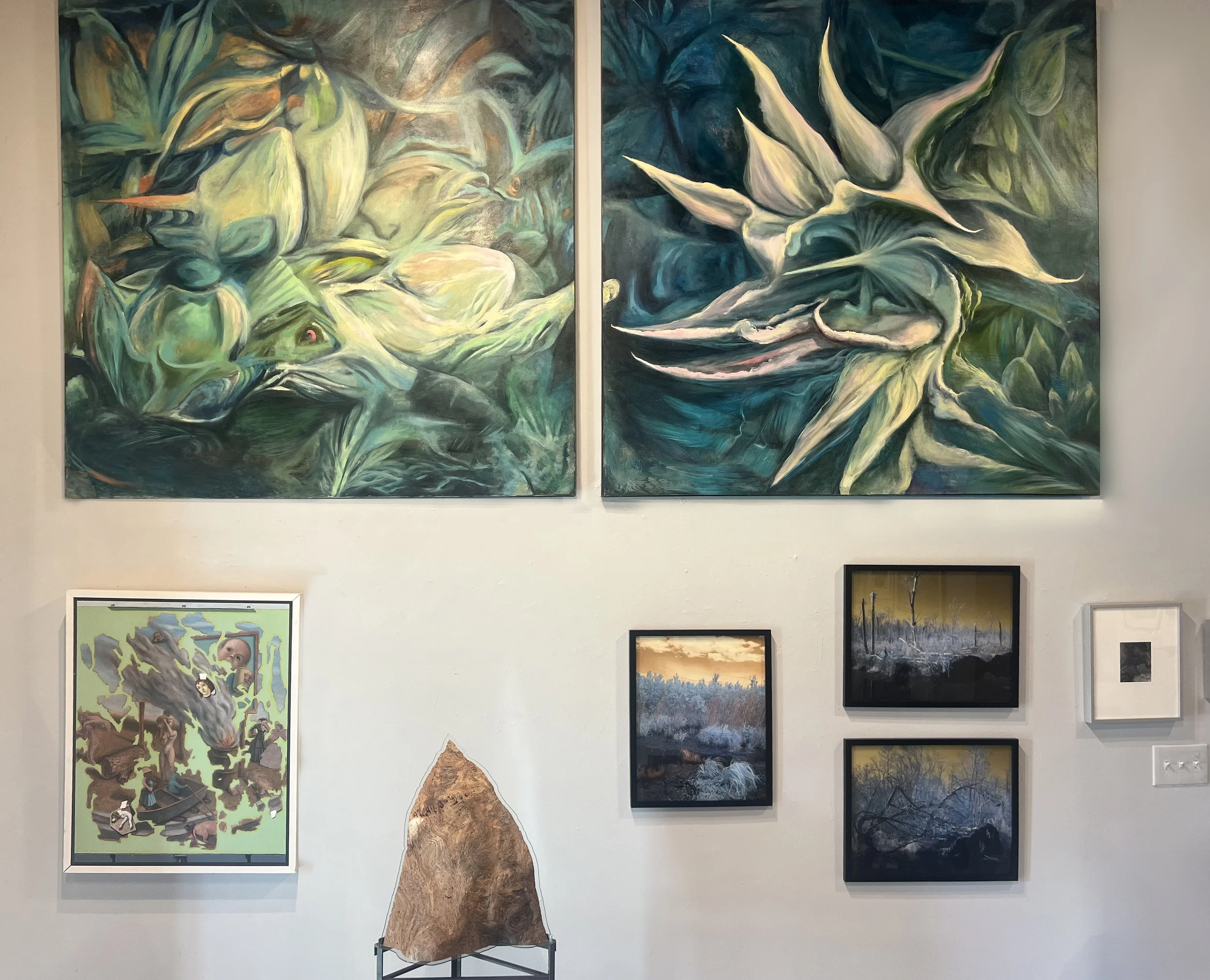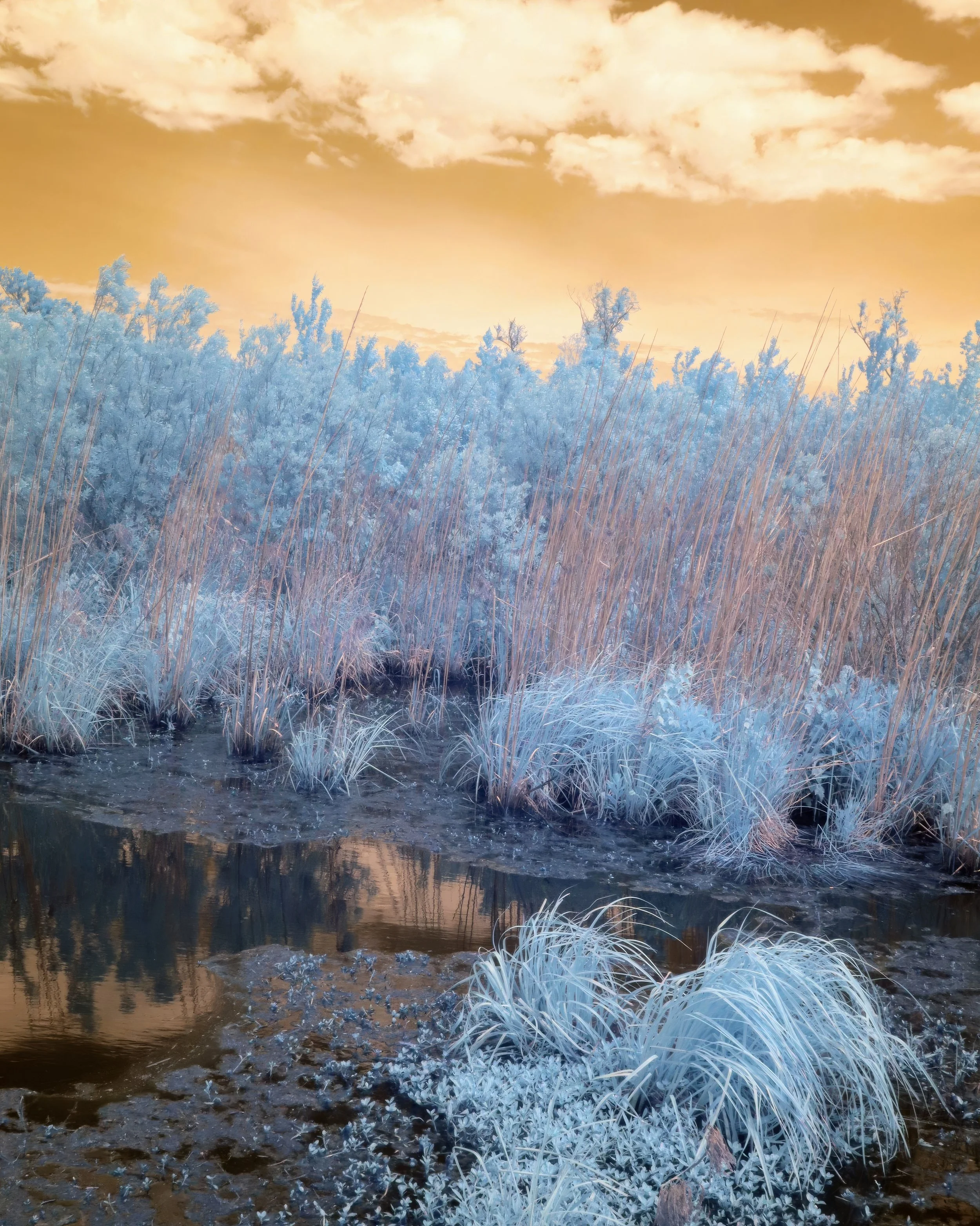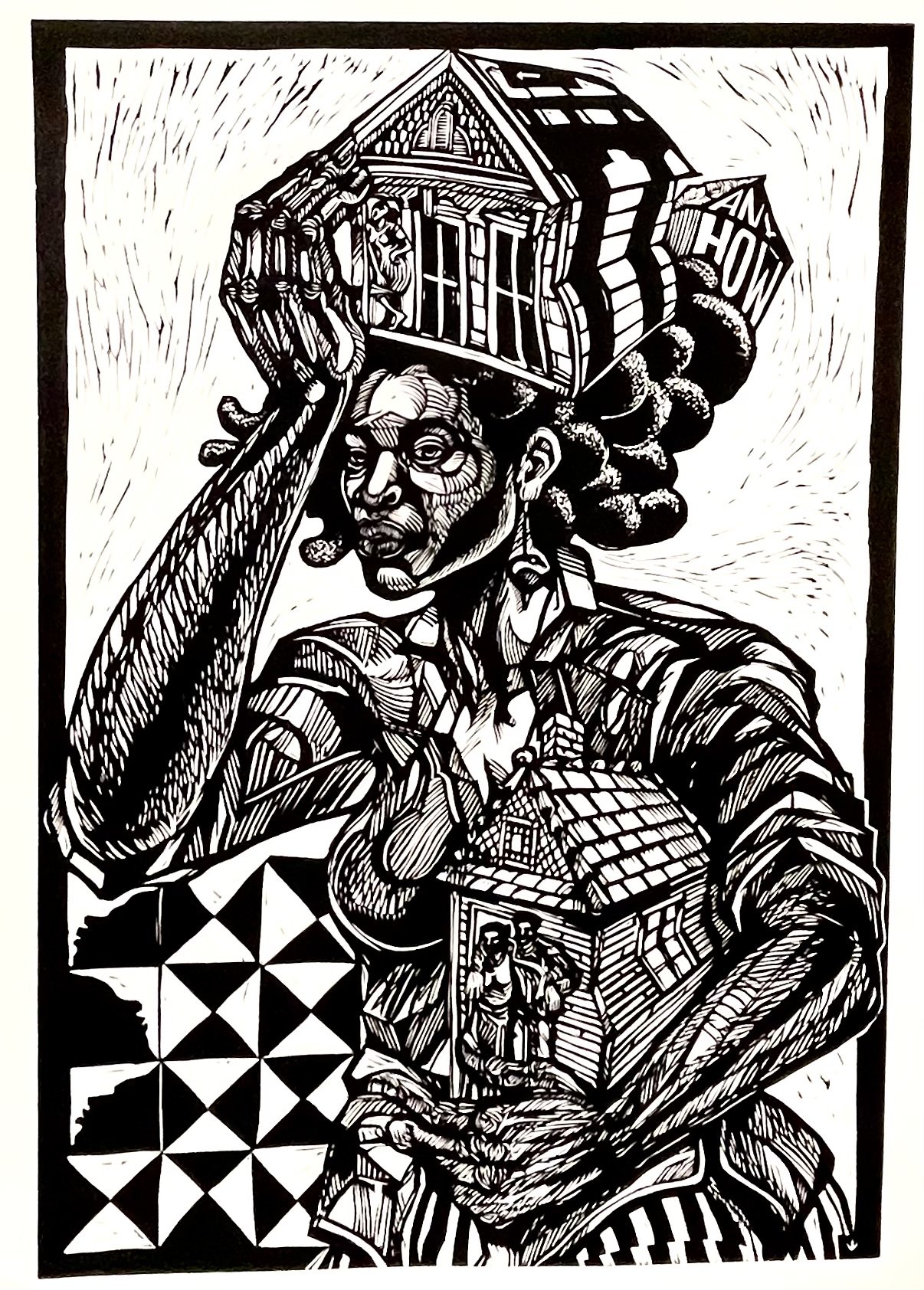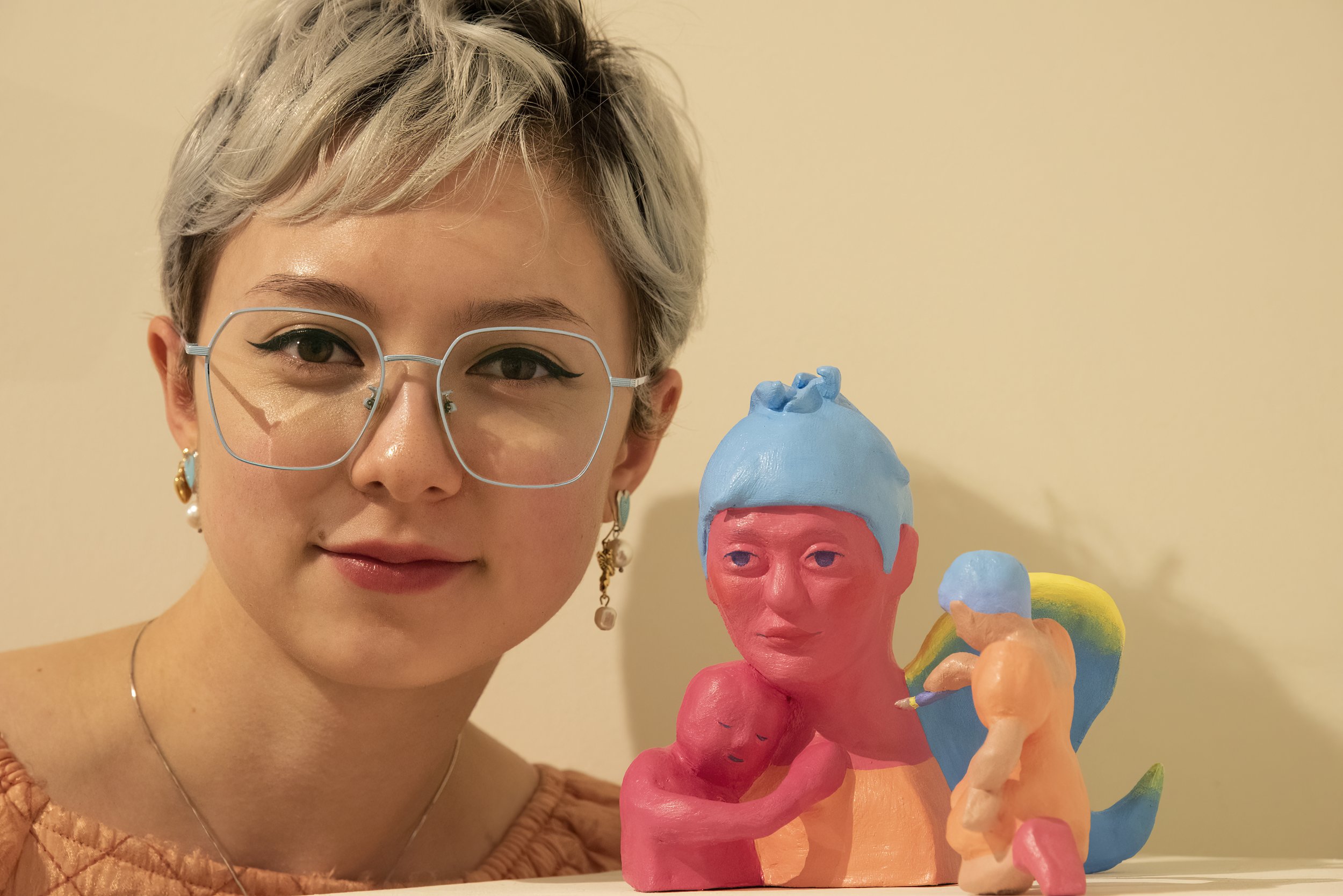A Visual Archive of Trust: Glenn Shepard in Conversation with Matney Gallery
For over three decades, anthropologist, photographer, and writer Glenn Shepard has documented the lifeways, cosmologies, and evolving realities of Indigenous communities in the Amazon basin. In this wide-ranging conversation, conducted on the occasion of Fragile Enchantment at Matney Gallery, Shepard reflects on his photographic practice, the ethical dimensions of fieldwork, and the power of portraiture to illuminate both vulnerability and resilience. From the rainforest village of Yomibato to the layered curatorial logic of a salon-style wall, this interview explores the intersections of ethnographic documentation, contemporary art, and cultural preservation—offering rare insight into a practice shaped by deep time, mutual trust, and a commitment to beauty in uncertain times.
Glenn Shepard, Cristianm photograph, edited by Charlie Hamilton James
On “Cristian” and Collaborative Fieldwork
Matney Gallery:
I’m so glad your piece is in the show—it fits beautifully. There’s a quiet resonance to it that really stands out. It actually reminds me a bit of Charlie Hamilton James’s tonal style—there’s that same subtle, atmospheric clarity
Tell me about the boy in the photograph—what’s the story behind that image?
Glenn Shepard:
I call the portrait Cristian—that’s the boy’s name. He’s a young child from the Matsigenka village of Yomibato, where I was working alongside Charlie Hamilton James and Nancy Santullo. Nancy runs Rainforest Flow (https://rainforestflow.org), a nonprofit that brings clean water and sanitation to remote Indigenous communities, dramatically improving public health outcomes.
Charlie has supported our work for years—amplifying it through social media, organizing flash print sales, and using his platform to raise awareness. He’s a prominent National Geographic photographer with a following of nearly half a million. Last June, he joined us in the village to create collaborative video and social media content highlighting our health initiatives. At the same time, he was collecting images for a forthcoming book and photo series titled The Last Dance, which explores the last vestiges of wildlife and traditional lifeways—places like the Serengeti and the deep Amazon.
We traveled together to a number of remote settlements—family clusters, small hamlets—assessing water systems and documenting daily life. At one point, while Charlie and Nancy were speaking with a local elder, I noticed a young boy—Cristian—sitting alone in a shaft of beautiful light inside one of the homes. He was shy at first, but then he peeked out just enough—and I got the shot.
I was actually using one of Charlie’s cameras. He’s sponsored by Nikon and had a few of their latest mirrorless models with him—a Z7 and a Zf. I borrowed the Zf, the lower-resolution version, while he used the Z7. I was impressed by how intuitive it felt.
Afterward, I showed Charlie the image and said, “Can you work your magic on this one?” And right there in the field, he did. He opened Photoshop, made a few precise adjustments, and turned a strong image into something extraordinary. I always credit him for that final touch—it elevated the portrait into something timeless.
On Post-Processing and Digital Tools
Matney Gallery:
Did this experience shift the way you approach image editing or series development?
Glenn Shepard:
I’ve always worked in this mode—portraiture of Indigenous people—but until recently, I mostly relied on what came straight out of the camera. Seeing how digital tools can transform an image really got me thinking. Charlie’s process sparked a curiosity in me—how subtle enhancement might become part of my own approach. I haven’t quite figured it out yet, but it definitely opened up new possibilities.
It reminded me of working in the darkroom with black-and-white film. You’d start with a negative and already sense the abstraction, the potential. But it was in the printing—dodging, burning, blocking—that the image would come alive, sometimes in unexpected ways. Digital editing now feels similar. With the right base image, you can use masks or color adjustments to draw something forward that was always there, just waiting to be emphasized. It’s not about fabricating—it’s about revealing
Matney Gallery:
I remember you sent some photos of a shaman with smoke curling around his silhouette—it had a haunting depth.
Glenn Shepard:
Yes, that’s another powerful image—taken in a Kayapo village in Brazil. The shaman is in profile, smoke coming from his mouth. It’s already strong, but with the right treatment, it could become iconic. I just need to take the time to experiment with layers, color grading, maybe even blending exposures. I’m still learning.
Glenn Shepard, 1992 archive
Glenn Shepard, 1992 archive
On Archiving and Community Storytelling
Matney Gallery:
What are you working on currently?
Glenn Shepard:Glenn Shepard:
Right now, I’m focused on a long-overdue archival phase. I’ve accumulated thousands of photographs—color slides, black-and-white negatives, digital files—spanning over three decades, dating back to the late 1980s. Only a small percentage of those have been scanned, let alone properly catalogued. My goal is to create a visual timeline of the Matsigenka village of Yomibato, documenting how the community has changed over time. It’s essentially forty years of visual anthropology—quiet, daily moments that now serve as historical records.
Glenn Shepard, 1992 archive
But I don’t see this as my archive alone. I want to work directly with the people in the village—sit down together, review the images, and let them decide which photographs best represent their collective story. The idea is to co-curate a photographic book, presented in three languages: Spanish, English, and Matsigenka. If we can produce it collaboratively, the book could be sold at their tourism lodge, at the park guard stations, or other regional hubs. The proceeds would support ongoing water access and education projects—needs the community has identified.
Glenn Shepard, 1992 archive
Beyond the photographs, I also have years of audio recordings—oral histories, creation myths, interviews, and conversations with elders about traditional medicine and plant knowledge. Many of those elders have since passed away. I want to ensure that this material doesn’t just sit in an archive or on a hard drive somewhere. It needs to be returned to the community in a meaningful, usable form—whether as translated transcripts, digital libraries, or educational materials they can use on their own terms. This isn’t about preserving culture as a static object; it’s about building something living, reciprocal, and enduring.
View of Fragile Enchantments
On Fragile EnchantmentS
Matney Gallery:
Let’s talk about the show. What was your impression walking through the exhibition?
Glenn Shepard:The show has an interesting feel—very different pieces, but they all fit together in a compelling way. Toward the front, there’s a section with more organic, natural materials—wooden things, sculptures, forest-like textures. Then you have another wall with more human faces—portraiture—but done in all sorts of styles. That wall really stood out to me.
You’ve got highly stylized Greek-inspired portraits in 3D, Jill Carnes' folk art tapestries, Rebecca Shkeyrov’s more modern and impressionistic self-portraits—and then this image of an Indigenous boy. It’s like a history of portraiture all on one wall. From classical Greek to folk to digital and Indigenous—it’s a whole range. It feels like a patchwork quilt, not just in the variety of styles but in how it’s installed. Things go higher up on the wall than usual. You stacked the work more than you normally do, and I think it works—it makes the whole wall feel alive
LITA TIRAK
GARTH FRY
SCOTT BELVILLE
JEAN-DANEIL LORIEUX
IVAN PLUSCH
Matney Gallery:
I was thinking a lot about the Brooklyn Museum when curating this show. They have this way of organizing work thematically rather than chronologically—you walk into a room and see African, European, Indigenous, and contemporary art all centered around a shared idea, rather than a fixed period or region. That approach really influenced me. I wanted the salon wall here to do something similar—to speak to fragility and enchantment, to create a space where beauty and memory persist, even amid disruption.
Glenn Shepard:
It definitely comes through. The way the sculptures are placed—they almost act like bookends for the wall of portraits. That whole arrangement, with paintings, textiles, and photographs layered together, creates a sort of visual quilt. It’s very arresting. The show has a layered feel that works really well, and your title, Fragile Enchantment, feels incredibly timely. We’re living in a moment where things that once seemed stable—freedom of expression, basic rights, even the idea of continuity—feel much more uncertain. The fragility you’re referencing isn’t just poetic—it’s political, emotional, and real. So I think the title frames the show in exactly the right way.
STEVE PRINCE
On Relationships and Long-Term Vision
Matney Gallery:
This show really comes out of long-standing relationships. I’ve been working with many of these artists for years. I don’t put together exhibitions by picking pieces to fit a specific style—it’s more like working with a living collection. These artists—Garth Fry, Jill Carnes, Rebecca Shkeyrov, Olga Tobreluts, Steve Prince, and others—they’re part of an ongoing story here. I see my role as helping to amplify their voices in museum and collector contexts, and to make space for their work to be seen and understood on deeper terms.
Glenn Shepard:
That’s what makes it feel personal. The work in the show is so varied, but it holds together because it’s rooted in real relationships. These aren’t just aesthetic choices—they’re part of a larger narrative of care, history, and cross-cultural respect that you’ve built over time.
Matney Gallery:
Exactly. And conversations like this one—with you, with Garth, with Jill—are part of how that story gets told. It’s not just about exhibiting artwork; it’s about investing in people, in dialogue, in a process that unfolds over time.
OLGA TOBRELUTS
REBECCA SHKEYROV
JILL CARNES
Closing Thoughts
Matney Gallery:
Thanks again for being part of this, Glenn. I really appreciate the conversation. Hopefully we’ll get a chance to meet up in person—maybe in Richmond, or even up in Asbury Park sometime soon.
Glenn Shepard:
I’d love that. Let’s definitely plan for it.
Matney Gallery:
Yes, let’s stay in touch—would be great to talk more and see where this all leads.
Glenn Shepard:
Absolutely. It’s been a real pleasure. Talk so



